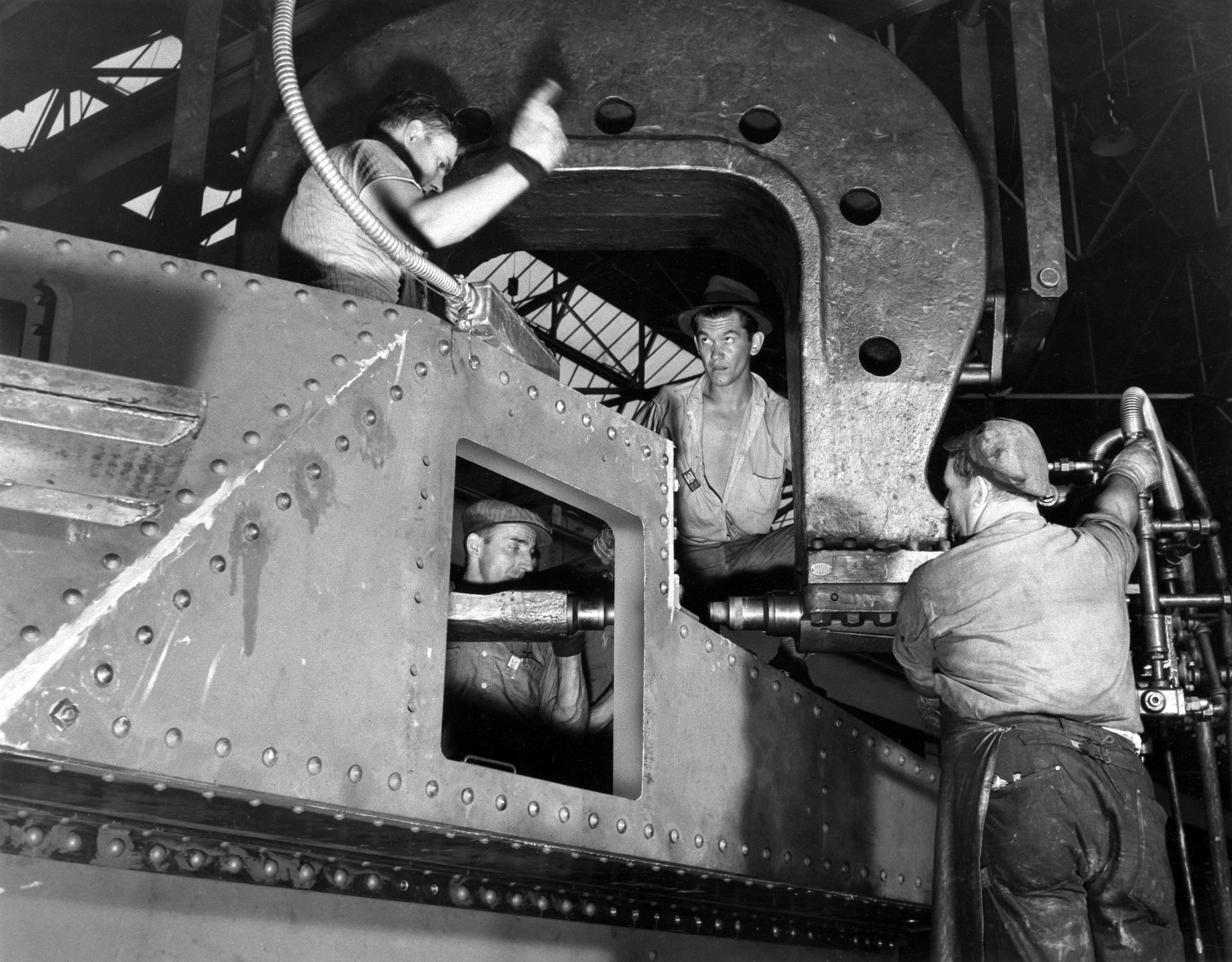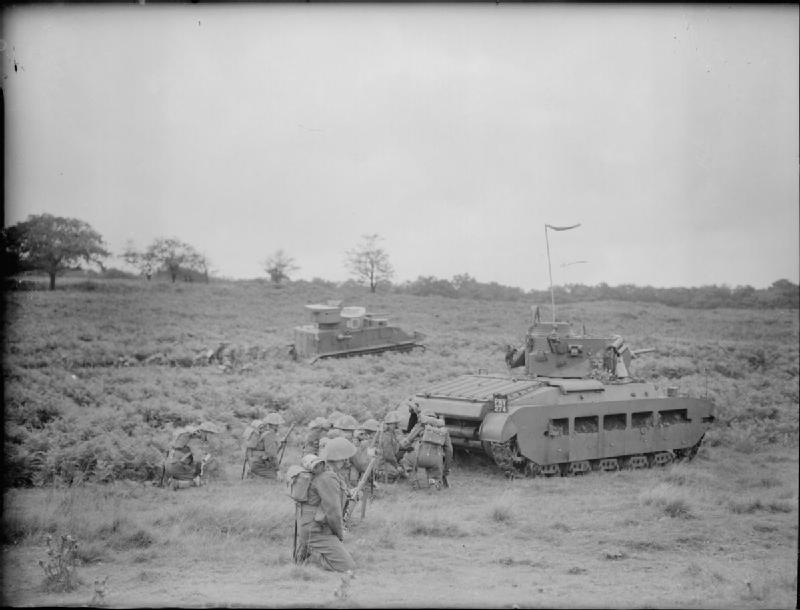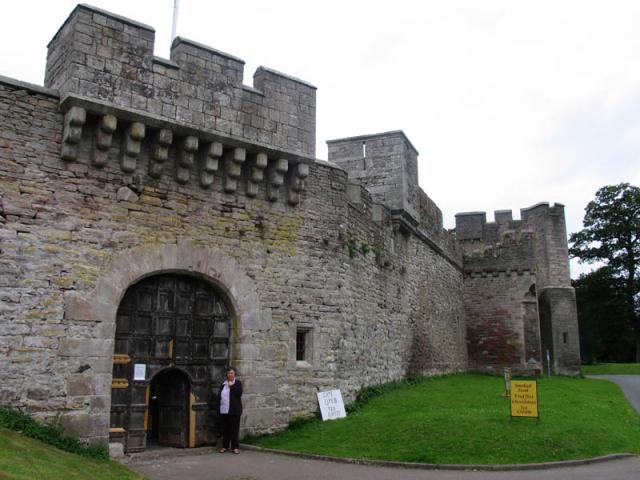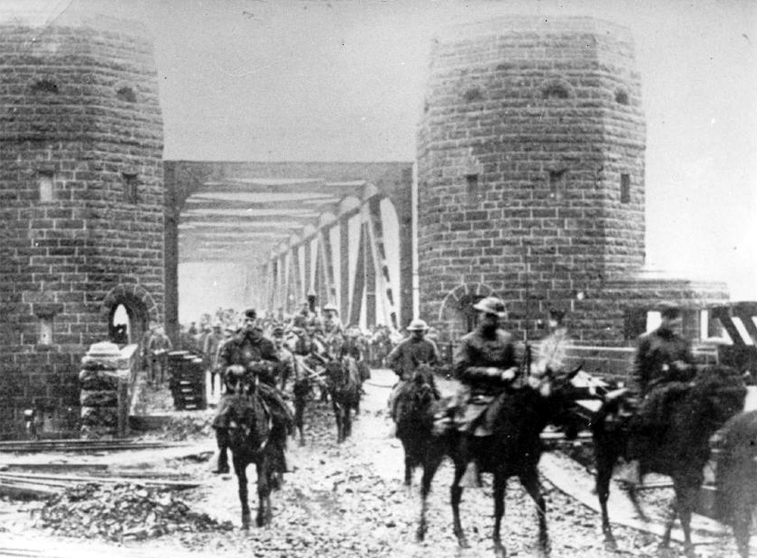|
Canal Defence Lights
The Canal Defence Light (CDL) was a British "secret weapon" of the Second World War, based upon the use of a powerful carbon-arc searchlight mounted on a tank. It was intended to be used during night-time attacks, when the light would allow enemy positions to be targeted. A secondary use of the light would be to dazzle and disorientate enemy troops, making it harder for them to return fire accurately. The name ''Canal Defence Light'' was used to conceal the device's true purpose. For the same reason, in US service they were designated ''T10 Shop Tractor''. Description The idea is credited to a Greek citizen, Marcel Mitzakis, who devised the system for the de Thoren Syndicate in the 1930s; they were advised by J F C Fuller. The device was demonstrated to the British War Office in 1937. Although three examples were ordered for tests, the trials did not begin until 1940, when the War Office took over and ordered 300 lights for fitting to tanks. A prototype was constructed using a M ... [...More Info...] [...Related Items...] OR: [Wikipedia] [Google] [Baidu] |
M3 Lee
The M3 Lee, officially Medium Tank, M3, was an American medium tank used during World War II. The turret was produced in two forms, one for US needs and one modified to British requirements to place the radio next to the commander. In British Commonwealth service, the tank was called by two names: tanks employing US pattern turrets were called "Lee," named after Confederate general Robert E. Lee, while those with British pattern turrets were known as "Grant," named after Union general Ulysses S. Grant. Design commenced in July 1940, and the first M3s were operational in late 1941. The US Army needed a medium tank armed with a 75mm gun and, coupled with the United Kingdom's immediate demand for 3,650 medium tanks, the Lee began production by late 1940. The design was a compromise meant to produce a tank as soon as possible. The M3 had considerable firepower and good armor, but had serious drawbacks in its general design and shape, including a high silhouette, an archaic sponson ... [...More Info...] [...Related Items...] OR: [Wikipedia] [Google] [Baidu] |
First United States Army
First Army is the oldest and longest-established field army of the United States Army. It served as a theater army, having seen service in both World War I and World War II, and supplied the US army with soldiers and equipment during the Korean War and the Vietnam war under some of the most famous and distinguished officers of the U.S. Army. It now serves as a mobilization, readiness and training command. History Establishment and World War I The First Army was established on 10 August 1918 as a field army when sufficient American military manpower had arrived on the Western Front during the final months of World War I. The large number of troops assigned to the American Expeditionary Forces (AEF) required the activation of subordinate commands. To fill this need, First Army was the first of three field armies established under the AEF. The first commander was General John J. Pershing, who also served as Commander-in-Chief (C-in-C) of the AEF. The headquarters planned ... [...More Info...] [...Related Items...] OR: [Wikipedia] [Google] [Baidu] |
Operation Clipper
During the Second World War, Operation Clipper was an Allied offensive by the British XXX Corps (which included the American 84th Infantry Division) to reduce the Geilenkirchen salient in mid-November 1944. ''Clipper'' was the preliminary to a wider Allied operation, Operation Queen, to gain control of the Roer valley and of the Hürtgen Forest. Geilenkirchen is situated on the Wurm River, some north of Aachen. The surrounding area is undulating, alternating between woodland, farmland and industrial villages. The area was crossed by a network of passable minor roads, some major roads and a railway line. The Wurm is the major geographic feature.U.S. History, pp545-546 The salient was a German position on the Siegfried Line (''Westwall'') at the boundary between the British Second Army and the American 9th Army. It restricted the movement of Allied forces and was a potential threat. The plan Anglo-American cooperation was prompted by the availability of British artillery ... [...More Info...] [...Related Items...] OR: [Wikipedia] [Google] [Baidu] |
Landing Vehicle Tracked
The Amphibious Vehicle, Tracked (LVT) is an amphibious warfare vehicle and amphibious landing craft, introduced by the United States Navy and United States Marine Corps. (The USN and USMC use "L" to designate Amphibious vessels, also called "L class.") The United States Army, Canadian Army and British Army used several LVT models during World War II, and referred to those vehicles as "Landing Vehicle, Tracked." Originally intended solely as cargo carriers for ship to shore operations, they evolved into assault troop and fire support vehicles. The types were known as amphtrack, "amtrak", "amtrac", etc. (portmanteaus of "amphibious tractor"), and "alligator" or "gator." Development The Alligator The LVT had its origins in a civilian rescue vehicle called the ''Alligator''. Developed by Donald Roebling in 1935, the Alligator was intended to operate in swampy areas, inaccessible to both traditional cars and boats. Two years later, Roebling built a redesigned vehicle wit ... [...More Info...] [...Related Items...] OR: [Wikipedia] [Google] [Baidu] |
49th Royal Tank Regiment
49th Royal Tank Regiment (49 RTR), later 49th Armoured Personnel Carrier Regiment and 49th Armoured Carrier Regiment, was a regiment of the British Army's Royal Armoured Corps during World War II that operated specialised armoured fighting vehicles in North West Europe. Origin and training As part of the rearmament of the British Army before World War II, the 6th Battalion Royal Northumberland Fusiliers, a Territorial Army infantry battalion, was converted to the armoured role on 1 November 1938, under the designation 43rd (6th City) Battalion, The Royal Northumberland Fusiliers, Royal Tank Regiment, or '43 RTR' for short. During 1939, it formed 49 RTR as a duplicate regiment. The regiments shared St George's Drill Hall in Newcastle upon Tyne as their depot. While 43 RTR used the conventional 'A', 'B' and 'C' squadron designations, 49 RTR adopted 'X', 'Y' and 'Z' for its squadrons.Scull. Both regiments were part of 25th Army Tank Brigade. In August 1939, 49 RTR had still not re ... [...More Info...] [...Related Items...] OR: [Wikipedia] [Google] [Baidu] |
42nd Royal Tank Regiment
The 42nd Royal Tank Regiment (42 RTR) was an armoured regiment of the British Army from 1938 until 1956. It was part of the Royal Tank Regiment, itself part of the Royal Armoured Corps. Mobilisation The unit was formed on 1 November 1938 by converting the 7th (23rd London) Battalion, East Surrey Regiment, a Territorial Army (TA) infantry battalion, into a tank unit. For a short while it was 42nd (7th (23rd London) Battalion, East Surrey Regiment) Battalion of the Royal Tank Corps before the corps was redesignated the Royal Tank Regiment in 1939. World War II The regiment was mobilised on the outbreak of war on 3 September 1939 as part of 21st Army Tank Brigade, composed of three TA battalions of the Royal Tank Regiment. The unit formed part of 1st Army Tank Brigade in 1941–42, serving with it in the Western Desert Campaign including the Second Battle of El Alamein. For the invasion of Northern Europe in 1944, it was equipped with Canal Defence Light Grant tanks. The ... [...More Info...] [...Related Items...] OR: [Wikipedia] [Google] [Baidu] |
Brougham Hall
Brougham Hall is located in the village of Brougham just outside Penrith, Cumbria, England. History The de Burgham family may have held land at Brougham in Edward the Confessor's time and were allowed to keep their position after the Norman Conquest of England, which occurred after 1092 in this region : a Wilfred de Burgham was recorded in the reign of Henry II. The de Burghams retained land by military service to the Vieuxpont lords who lived at Brougham Castle close by. The hall, usually sold in third parts, passed through the hands of various families in Medieval times. Lady Anne Clifford, 14th Baroness de Clifford, the then owner of Brougham Castle, bought one third part of Brougham Hall in 1654. Amongst other improvements, she re-built the Hall's chapel, St. Wilfrid's, completed about 1659. Lady Anne's attorney-at law and later her steward, James Bird, bought her third of the Hall and manor after her death (1676), being the first person to hold the entirety of the building ... [...More Info...] [...Related Items...] OR: [Wikipedia] [Google] [Baidu] |
Penrith, Cumbria
Penrith (, , ) is a market town and civil parish in the county of Cumbria, England, about south of Carlisle. It is less than outside the Lake District, Lake District National Park, in between the Rivers River Petteril, Petteril and River Eamont, Eamont and just north of the River Lowther. It had a population of 15,181 at the 2011 Census. Historic counties of England, Historically in Cumberland, Penrith's current local authority, local authorities are the Eden, Cumbria, Eden District Council, which is based in the town, and Cumbria County Council. In 2023, Penrith will become part of the Westmorland and Furness unitary authority area. From 1974 to 2015, it was an unparished area with no local council. A civil parish was reintroduced as Penrith Town Council and first elected on 7 May 2015. Toponymy The etymology of "Penrith" has been debated. Several writers argue for the Cumbric or Welsh language, Welsh "head, chief, end" (both noun and adjective) with the Cumbric , Wels ... [...More Info...] [...Related Items...] OR: [Wikipedia] [Google] [Baidu] |
Lowther Castle
Lowther Castle is a country house in the historic county of Westmorland, which now forms part of the modern county of Cumbria, England. It has belonged to the Lowther family, latterly the Earls of Lonsdale, since the Middle Ages. It is a fully managed ruin, open to visits by the public to the shell of the castle and some of the gardens since 2011. Additional work was completed since that time, most recently on the extensive gardens. Francis Knollys escorted Mary, Queen of Scots to Lowther Castle on 13 July 1568 on her way to Wharton and Bolton Castle. In the late 17th century John Lowther, 1st Viscount Lonsdale rebuilt the family home, then known as Lowther Hall, on a grand scale. The current building is a castellated mansion which was built by Robert Smirke for William Lowther, 1st Earl of Lonsdale between 1806 and 1814, and it was only at that time that the site was designated a "castle". The family fortune was undermined by the extravagance of the 5th Earl of Lonsda ... [...More Info...] [...Related Items...] OR: [Wikipedia] [Google] [Baidu] |
11th Royal Tank Regiment
The 11th Royal Tank Regiment (11 RTR) was an armoured regiment of the British Army. It is part of the Royal Tank Regiment, itself part of the Royal Armoured Corps. History The 11th Royal Tank Regiment was raised during World War II in January 1941 and designated for the Canal Defence Light (CDL) role in May 1941. The unit trained at Lowther Castle near Penrith, and was based at Brougham Hall, Cumberland. It spent 1942 and 1943 in the Middle East without seeing action, returning to the UK in April 1944. 11 RTR formed part of 79th Armoured Division (aka Hobart's Funnies), equipped initially with CDL (tactical searchlight) tanks. It landed in Normandy on 12 August 1944, seeing no action until 29 September 1944, when it was ordered to transfer all of its equipment to the 42nd and 49th Royal Tank Regiments, and was retrained to operate the American amphibious LVT-4, known by the British Army as the Buffalo Mark IV. Not long after D-Day (6 June 1944) 11 RTR converted to Buffalo (U.S. LV ... [...More Info...] [...Related Items...] OR: [Wikipedia] [Google] [Baidu] |
Military Police Corps (United States)
The United States Army Military Police Corps (USAMPC) is the uniformed law enforcement branch of the United States Army. Investigations are conducted by Military Police Investigators under the Provost Marshal General's Office or Special Agents of the United States Army Criminal Investigation Division (USACID). United States Army Military Police units have combat zone responsibilities in addition to their law enforcement duties. These responsibilities include mounted and dismounted patrols, response force operations, area damage control, route reconnaissance, cordon and search operations, critical site security, and convoy and personnel escorts. Operationally, these duties fall under the "security and mobility support" discipline of the Military Police Corps. Since the beginning of the Global War on Terror, military police have become a valuable asset to combat operations due to the versatility of the United States military occupation code. Mission The United States Army's M ... [...More Info...] [...Related Items...] OR: [Wikipedia] [Google] [Baidu] |
Battle Of Remagen
The Battle of Remagen was an 18-day battle during the Allied invasion of Germany in World War II from 7 to 25 March 1945 when American forces unexpectedly captured the Ludendorff Bridge over the Rhine intact. They were able to hold it against German opposition and build additional temporary crossings. The presence of a bridgehead across the Rhine advanced by three weeks the Western Allies' planned crossing of the Rhine into the German interior. After capturing the Siegfried Line, the 9th Armored Division of the U.S. First Army had advanced unexpectedly quickly towards the Rhine. They were very surprised to see one of the last bridges across the Rhine still standing. The Germans had wired the bridge with about of demolition charges. When they tried to blow it up, only a portion of the explosives detonated. U.S. forces captured the bridge and rapidly expanded their first bridgehead across the Rhine, two weeks before Field Marshal Bernard Montgomery's meticulously planned Oper ... [...More Info...] [...Related Items...] OR: [Wikipedia] [Google] [Baidu] |









